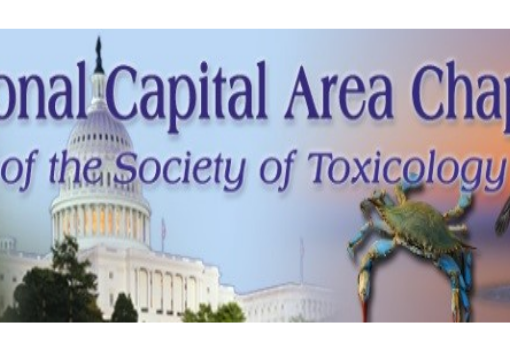Joint CSW/WCDG Meeting 10/18
On Wednesday, October 18th, CSW and the Washington Chromatography Discussion Group (WCDG) will host a joint meeting at ACS Headquarters, featuring a presentation by John Hanover from the National Institutes of Health. Logistics can be found below.
Biography: Dr. John Hanover
Dr. Hanover carried out his doctoral research with Dr. William J. Lennarz at Johns Hopkins University School of Medicine detailing the early steps in the transmembrane assembly of membrane and secretory proteins. He then did a Jane Coffin Childs postdoctoral fellowship with Dr. Ira H. Pastan focused on growth factor signaling, endocytosis, and the molecular basis of drug resistance. In his independent work, Dr. Hanover first identified the nuclear pore
proteins and then cloned the first of these proteins, NUP62. He showed that many components of the nuclear pore are modified by a novel modification: O-linked N-acetylglucosamine (O-linked GlcNAc). In 1997, he cloned and sequenced C. elegans and human O-GlcNAc Transferase (OGT), published back-to-back with Dr. Gerald Hart’s identification of rat OGT. These early papers by the Hart and Hanover labs have led to an explosion of research on O-GlcNAc and its many targets. Based on its substrate specificity and molecular features, the Hanover lab proposed that O-linked GlcNAc transferase is the terminal step in a glucose-responsive pathway that becomes dysregulated in diabetes, neurodegenerative disease, and diabetes mellitus (NIDDM). The enzyme catalyzing O-GlcNAc removal, O-GlcNAcase, has also been identified, expressed and shown to exist as differentially targeted isoforms in man. Dr. Hanover was an early pioneer in the use of biorthogonal sugars and continues to develop probes to explore the Chemical Biology of surface and intracellular glycans. He also exploits genetically amenable Mouse, C. elegans, and Drosophila models to examine the physiological impact of the enzymes of O-GlcNAc cycling. Using reverse genetics, knockout, and other transgenic models, he is currently exploring the role of these essential genes in signal transduction and epigenetic regulation. O-GlcNAc has emerged as a key epigenetic regulator that may function in the intrauterine environment to influence disease susceptibility in the offspring. The enzymes of O-GlcNAc cycling also interact with key components of the machinery influencing DNA methylation associated with Genomic imprinting.
Dr. Hanover has long been a strong advocate for the field of Glycobiology. He has mentored over 20 active independent glycoscientists in such fields as carbohydrate chemistry, cancer biology, infectious diseases, and immunology. He served as the leader for the glycans in the Disease and Development Subgroup of the Consortium for Functional Glycomics since the inception of the consortium subgroups, and was reelected for that role upon reorganization in 2013. Along with Dr. Kelly Ten Hagen, he serves as the Society for Glycobiology’s representative to the International Glycoconjugate Organization (IGO). He has also been involved in helping to organize Glycobiology Gordon Conferences, Glycobiology Society meetings, and IGO Glycoscience meetings over many years of participation in those conferences. More generally, he has participated numerous review panels for the NIH, NSF, and FDA. Most recently, he chaired the “Common Fund” Review panel in efforts to establish “Novel and Innovative tools”, and “Adapt Novel tools” to advance Glycoscience. He has been an active member of the Society for Glycobiology since its inception and was previously a member of the Society for Complex Carbohydrates.
Abstract: A Little Sugar goes a Long Way: O-GlcNAc in Human Disease
O-GlcNAc is a single monosaccharide modification of nuclear and cytoplasmic proteins. O-GlcNAcylation is driven by the nutrient-sensing hexosamine biosynthetic pathway and may rival protein phosphorylation in its abundance and impact on cellular signaling. Emerging evidence suggests that this modification may also have far-reaching consequences for chronic human diseases including cancer, diabetes, and neurodegeneration. Findings in C. elegans, Drosophila, and mouse model systems have demonstrated that the dynamic turnover of O-GlcNAc is critical for maintaining levels of key transcriptional regulators responsible for neurodevelopment fate decisions. In addition, pathways of autophagy and proteasomal degradation depend upon a transcriptional network dependent upon O-GlcNAc cycling. Like the quality control system in the endoplasmic reticulum which uses a “mannose-timer” to monitor protein folding, we propose that cytoplasmic proteostasis uses an “O-GlcNAc timer” that helps to regulate the lifetime and fate of cytosolic proteins. Worm, fly, and mouse models harboring O-GlcNAc transferase and O-GlcNAcase knockout alleles have helped define the role O-GlcNAc plays in development and age-associated neurodegenerative disease. We anticipate that brain-selective knockout mouse models will be an important tool for understanding the role of O-GlcNAc in the physiology of the brain and its susceptibility to neurodegenerative injury. Blocking O-GlcNAc cycling is detrimental to mammalian brain development and interferes with neurogenesis, neural migration, and proteostasis. O-GlcNAc-dependent developmental alterations impact metabolism and growth of the developing mouse embryo and persist into adulthood. Thus, O-GlcNAcase is both a promising diagnostic and therapeutic target for human neurodegenerative disease. O-GlcNAc may also trigger a global reprograming of metabolism in cancer and metabolic disease. We are currently leveraging chemical tools to examine the role of O-GlcNAc in human disease.
Meeting Logistics
Date: Wednesday, October 18
Time: 6:00 p.m. social hour, 7:00 p.m. presentation
Location: ACS Headquarters, Marvel Hall, 1155 16th Street, N.W. – Washington, DC
Menu: Pasta Bar: choice of bow tie or penne pasta, with marinara or vodka sauce; Caesar salad; garlic bread; and cookies.
RSVP by noon on Monday, October 16 to csw@acs.org or by phone (messages only: 202-659-2650). Please provide the names in your party when you RSVP. The public is invited to attend. You may attend the talk only, but reservations are appreciated.
Parking: Parking is available in nearby commercial parking garages. Please be aware that garage closing
times vary. Parking is also available on the street after 6:30 pm, but be aware that most parking meters
are in effect until 10:00 pm and may be limited to 2 hours. You should check the individual meters for
details and payment methods as some are no longer coin-operated.
Metro: Blue/Orange/Silver Line: McPherson Square or Farragut West. Red Line: Farragut North.




